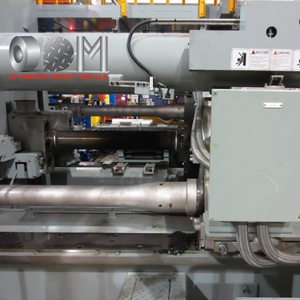Understanding Custom Aluminum Extrusion Fabrication
Despite being lightweight, aluminum is a durable metal with high strength and versatility. Custom aluminum extrusions leverage the adaptability of the metal to create objects and materials that can come in various shapes or profiles. Whether it’s melted, formed, or extruded, aluminum does not lose its robustness, guaranteeing longevity and dependability with your product. To top it off, the very process of custom aluminum extrusion is far more cost-effective than alternative production methods.
As one of the premier aluminum extrusion suppliers globally, Offshore Direct Metals is committed to providing high-quality custom aluminum extrusions. Our team is here to help bring your design to life through consultation and expertise. Through cultivating relationships with a global network of supply partners, we supply top-quality profiles at reduced costs.
The Extrusion Process
 In order for an aluminum extrusion product to achieve its intended purpose and functionality, it will need to undergo a specific fabrication process. It first begins with precisely cutting the aluminum alloy to its fixed length. The extrusion is then punched, machined, bent, welded, and assembled.
In order for an aluminum extrusion product to achieve its intended purpose and functionality, it will need to undergo a specific fabrication process. It first begins with precisely cutting the aluminum alloy to its fixed length. The extrusion is then punched, machined, bent, welded, and assembled.
Punching Extrusion
Following the cutting of the alloy, the extrusion undergoes punching and/or forming. This is achieved through mechanical presses, as well as a tool that creates part-specific slots, holes and other functional features.
Machining Extrusion
Aluminum’s inherent versatility enables the metal to be drilled, milled, tapped and turned while retaining its durability. Machining can turn aluminum into complex components, such as pieces for telecommunications or bicycles. The machining process features varying speeds, optimal tool configurations and machining capabilities.
Bending Extrusion
The bending process varies across aluminum extrusion suppliers. But with the right profile and bending technique, aluminum can be shaped into complex forms and sizes. Bending is outlined during the product’s design, since factors such as the type of alloy and heat temperature are considered. The profile design will also dictate the type of bending process utilized.
There are three standard bending processes: press or ram bending, roller bending, and stretch or rotary draw bending. With press or ram bending, the part is shaped through a two-part tool. A bending die pushes the profile against pressure dies. This process is typically used for simple operations. The roller bending process sees the extrusion bent into a large radius, rolling it into a full circle part. Stretch or rotary draw bending is utilized to create complex or multiple bend parts.
Welding and Assembly
Joining extrusions together can be achieved through several different methods. You can design a mechanically joining mechanism into the extrusion itself. This includes components such as screw bosses, snap joints, bolt receptors, and dovetails.
There’s the adhesive bonding route. This method is useful for creating permanent joints or joining different materials and avoiding stress concentrations.
A common technique for joining extrusions is welding. Welding is commonly used with various alloys. Both manual or robotic welding can get the job done.
Choosing Offshore Direct Metals
With Offshore Direct Metals, we can bring your design variations to life at cost-effective rates. And with aluminum being versatile and budget-friendly, you can choose from several different finishing coatings. Offshore Direct Metals can apply anodizing, powder coating, pretreatment finishes, etc.
Contact Offshore Direct Metals to see how we can help create and realize your design's full potential.

 1.855.272.3889
1.855.272.3889  1.365.697.5889
1.365.697.5889